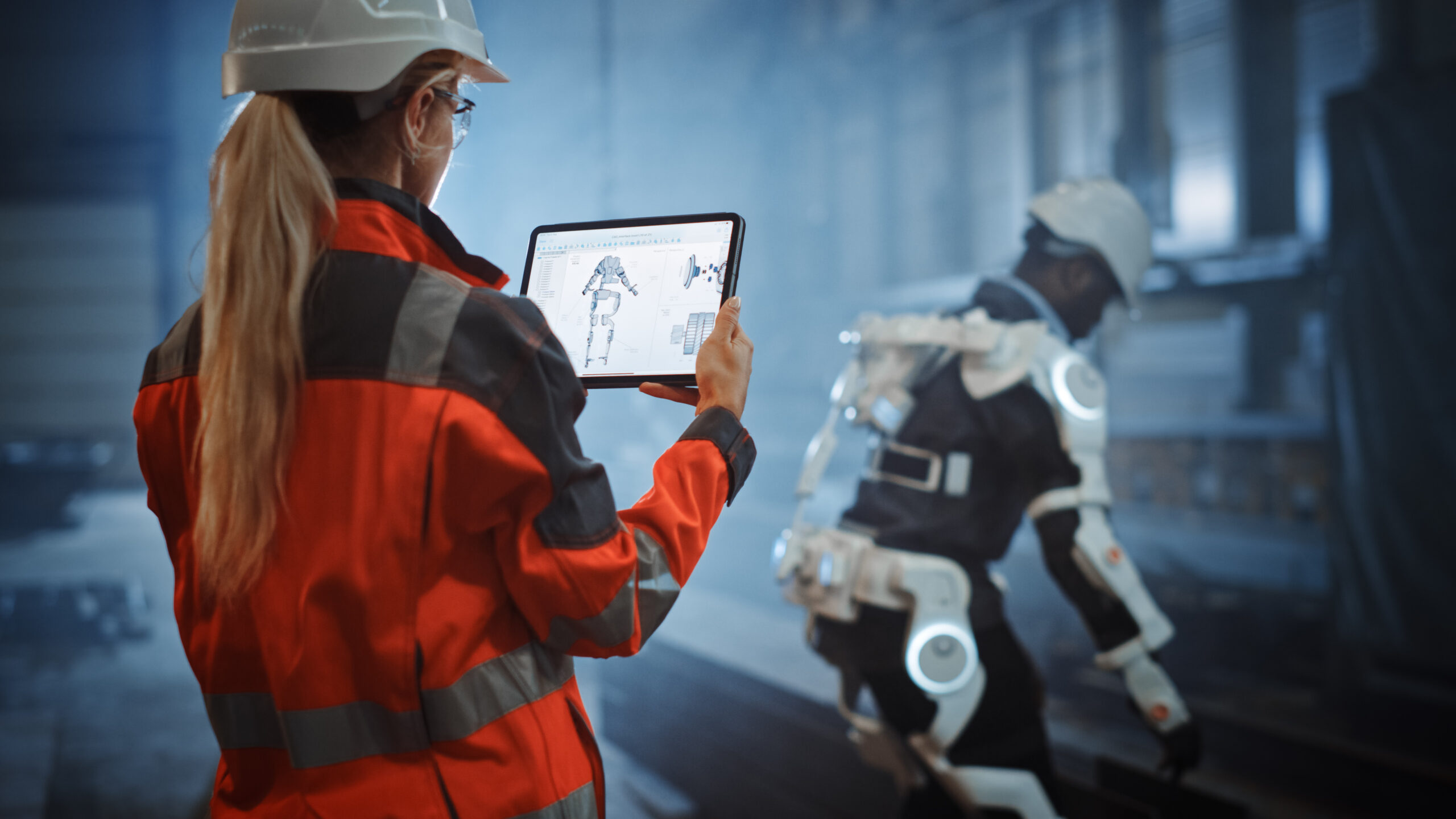How Technology Can Boost Workplace Safety
March 1, 2024
Technology continues to influence workplace safety procedures. Consider offering employees the latest innovations that can protect their well-being and safety.
Technology continues to influence workplace safety procedures. Consider offering employees the latest innovations that can protect their well-being and safety.

In today’s fast-paced and complex work environment, employers are starting to embrace new technology in an effort to improve workplace safety. The integration of advanced technology into these practices offers a promising solution to daily injuries and major events.
The transition from traditional, reactive safety measures to a more proactive, tech-driven strategy not only highlights a commitment to protecting workers but also the evolving landscape of modern work environments.
By leveraging tools such as artificial intelligence, wearables and other automation tools, businesses can enhance emergency response protocols and create a culture of safety that prioritizes the well-being of every individual on the team.
Some of the technology available for employers to consider are:
Workers in industries such as manufacturing and construction have the option to wear exoskeletons. These devices help transfer weight from repetitive tasks and reduce the strain on the body and help conserve energy. As a result, employees not only experience a decreased risk of injuries, such as lower back pain, but also benefit from enhanced strength, agility and overall productivity.
By replicating physical environments, this technology is an advanced training opportunity for employees. Through simulations that mirror hazardous tasks, the team will be able to identify safety needs. As a result, employees are better prepared for real-life hazards on the job. As this technology matures, more benefits are expected.
Wearable devices enable real-time monitoring of workers’ vital signs and can warn them about environmental hazards. Moreover, they help lower healthcare expenses by reducing health risks like respiratory issues and hearing damage. Employers also benefit as wearables can offer insights into the potential cause of an employee’s injury before filing a workers’ compensation claim.
Although the use of mobile devices can be a distraction and safety liability, there are some useful apps. Workers can download apps that detect safety hazards, log safety incidents, track OSHA requirements and even determine when the heat index is too high on job sites. The key to improving worker safety with hand-held mobile devices is to use them responsibly and provide guidelines that workers can follow.
Using drones in high-risk zones rather than risking human lives enables the safe evaluation of damage and the strategic development of emergency response plans. Additionally, drones offer a cost-effective and efficient solution for gathering crucial data in challenging environments.
Aside from the introduction of new devices, the field of data science has revolutionized the way companies assess safety on job sites. By leveraging advanced algorithms, companies can now analyze photos taken at sites to identify potential safety hazards. These photos are cross-referenced with accident records to pinpoint areas of concern, helping enhance workplace safety measures.
Companies can leverage these advanced algorithms to assess and rate project risks more accurately. This can lead to a significant improvement in detecting and addressing elevated threats promptly, potentially saving lives through timely safety interventions.
The cloud consists of multiple networks of servers that allow apps to be accessed anywhere through the internet instead of being confined to a particular computer or network. By utilizing the cloud, companies have been able to completely overhaul the way they interact with each other and their workers.
Businesses that operate across various locations find value in leveraging cloud technologies. The cloud not only boosts efficiency but also facilitates smooth information transfer and enables monitoring of workers’ safety protocols. These solutions enhance overall operational effectiveness and ensure a secure work environment across multiple project sites.
New technology can potentially be a waste of money if not deployed properly. It’s easy to get caught up in the “wow factor” and lose sight of what the intended improvements are for. Without a plan in place for deployment, a technological investment may be wasted.
Before seeking out new technology, consider other ways to improve workplace safety processes. After making those improvements, it becomes easier to identify gaps that new technology can address. No amount of technology will help if it’s the process itself that needs to be fixed.
The integration of new technology into workplace safety marks a pivotal shift towards modernization. By incorporating advanced tools like exoskeletons, virtual reality training and wearables, businesses are equipped to prevent accidents, improve emergency response times and foster a culture of safety.
However, it’s important to approach these advancements with a strategic plan. By assessing the needs and processes to ensure effective deployment, tailored solutions can lead to significant advancements in worker safety and productivity. For more information or resource on how to transform the way you protect and insure your workforce in the modern era contact a trusted advisor.